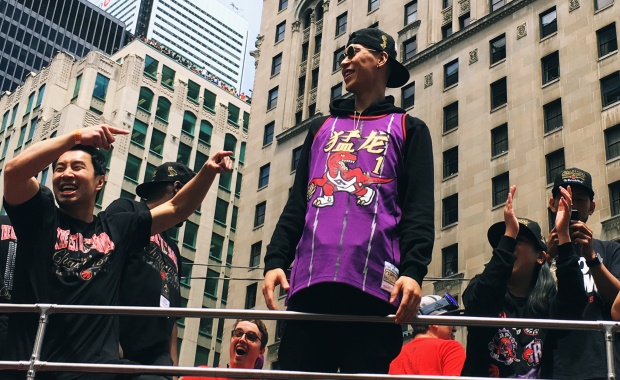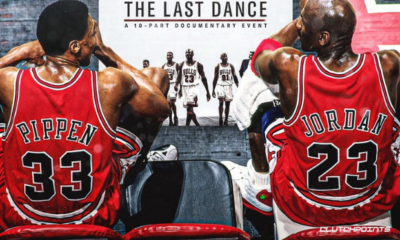Success Advice
10 Things That Everyone Can Learn From Jeremy Lin | The NBA Asian Basketball Super Star

My generation has made a habit of choosing poor role models for ourselves. We ignore the useful, the wise and the charitable and instead idolize ‘lucky shot’ celebrities: ‘right face, right time’ actors and those who crave nothing but fame.
Every once in a while, though, we find a worthwhile role model in the world of entertainment; someone who deserves our respect not just for their acting skills or physical prowess, but for their courage, tenacity and drive to succeed against insurmountable odds. Jeremy Lin is one such man.
Jeremy Lin is the first American of Chinese or Taiwanese descent to make it to the NBA. That would be extraordinary in itself, if only for the fact that it’s rare for Asian ball players to attain the height necessary to compete in the professional leagues, but Lin’s career is much more than a fish out of water story. Lin’s journey to the New York Knicks has been anything but smooth, and we could all benefit from taking a few lessons from him. Jeremy Lin may not be able to teach you how to dunk, but he can certainly offer a few insights into what it takes to be the best.
10 Things the World Can Learn From The NBA Asian Sensation “Jeremy Lin”
– It Takes 10,000 Hours
They say it takes 10,000 hours of practice to perfect a skill, and Jeremy Lin clearly believes that. His skills have been developed over years of constant, unrelenting training. There are no free rides… in basketball or in life.
– Carpe Diem
When Jeremy Lin was picked up by the Knicks he arrived with no expectations. Just a kid with no hype surrounding him, nobody expected Lin to be the next big thing. He was only started because the team was suffering too many injuries and absences, and he knew he had to make a splash if he was going to make it. You may only get one chance to blow the audience away. Don’t waste it.
– Tenacity Counts
Nobody would have foreseen Jeremy Lin making it all the way to the NBA. As an Asian American the odds were stacked against him, and when he wasn’t offered an athletic scholarship to college he took the hard route. He studied hard, pushing his GPA to 4.2 and heading to Harvard on the strength of his academic achievements. The path of least resistance rarely leads to success.
– Risk Comes Before Reward
Lin’s contract with the New York Knicks wasn’t handed to him on a silver platter. Before he was signed he slept on his brother’s couch in the Lower East Side as he couldn’t afford to pay rent. If you want to succeed you have to take risks. Leave everything out on the court. Sleep on a couch. People who play safe rarely make it big.
– Believe in Yourself
Jeremy Lin’s professional career up until now could be summed up in three words: ‘Seriously, this guy?’. Nothing about his success was pre-destined, and he had to fight for every inch. He’s one of the few Asian Americans to make it in the NBA, and the first Harvard graduate in the league since 1954. Without a degree of self belief as tough as titanium he would have given up long ago.
– Don’t Brag
We’ve seen success go to the heads of far too many athletes to count, but Jeremy Lin has so far resisted. It takes guts to be a gracious loser, but it’s often more difficult to be a gracious winner. Lin accepts victory with class and style.
– Know Your Own Strengths
Before joining the Knicks Lin played for Golden State and the Houston Rockets, and was dropped by both teams in order to free up funds to pay for new players. Lin isn’t a flashy player. He doesn’t dazzle, but he’s a great passer and distributor. It was only when the Knicks recognized his strengths that he found a permanent place in a team. You have to know your strengths and weaknesses, and find an organization where you’ll thrive.
– Look for a Lin
On the flip side, you can take a lesson from the New York Knicks coach Mike D’Antoni. Look for the strengths of the people in your life and work. You might have employees right now who aren’t performing as well as they should. Do you have them dunking when they should be passing? Re-tasking can be better than replacing.
– Be Original
Too many players set their sights on being the next Michael Jordan, and they rarely realize that this is a fool’s errand. Jeremy Lin is content to be the best he can be. He isn’t trying to emulate anyone else. He’s simply doing what he does best. Forge your own path.
– Make Your Team Look Good
Finally, success is a team effort. Jeremy Lin knows this. He knows that the top of the league is full of great teams, not great individuals. Going for personal glory is rarely the best approach. Make the team look good and everybody wins.
Jeremy Lin – What It Takes To Be Jeremy Lin
http://www.youtube.com/watch?v=51umej5SvXc
Jeremy Lin’s Top 10 Moments In The NBA
Did You Know
How Skilled Migrants Are Building Successful Careers After Moving Countries
Behind every successful skilled migrant career is a mix of resilience, strategy, and navigating systems built for locals.

Moving to a new country for work is exciting, but it can also be unnerving. Skilled migrants leave behind familiar systems, networks, and support to pursue better job opportunities and a better future for their families. (more…)
Life
10 Research-Backed Steps to Create Real Change This New Year
This New Year could finally be the one where you break old patterns and create real, lasting change.

Every New Year, we make plans and set goals, but often repeat old patterns. (more…)
Change Your Mindset
The Silent Skill That Makes People Respect You Instantly
What truly earns respect and why most people go about it the wrong way

Everybody craves respect but not everyone earns it. Some people believe that a title, years of experience, or a position of authority automatically entitles them to respect. (more…)
Entrepreneurs
The Essential Skills Every Entrepreneur Needs In 2026
Success in the digital age isn’t about luck. It’s about mastering the skills that separate dreamers from doers.

When I was 22 years old, I started my first side hustle as a ghostwriter. (more…)
-

 Business4 weeks ago
Business4 weeks agoWhy Your E-Commerce Fulfilment Is Probably Broken (And How to Fix It)
-

 Shift Your Mindset3 weeks ago
Shift Your Mindset3 weeks ago11 E’s That Define Every Great Leader And Why Most People Miss Them
-

 Did You Know3 weeks ago
Did You Know3 weeks agoThe Success Patterns You Inherited (And Didn’t Notice)
-

 Entrepreneurs2 weeks ago
Entrepreneurs2 weeks agoThe Essential Skills Every Entrepreneur Needs In 2026
-

 Business3 weeks ago
Business3 weeks agoThe Hidden Money Pit in Your Operations (and How to Use It)
-

 Change Your Mindset2 weeks ago
Change Your Mindset2 weeks agoHow to Turn Your Mind Into Your Greatest Asset (Instead of Your Enemy)
-

 Change Your Mindset1 week ago
Change Your Mindset1 week agoThe Silent Skill That Makes People Respect You Instantly
-

 Life6 days ago
Life6 days ago10 Research-Backed Steps to Create Real Change This New Year

























6 Comments